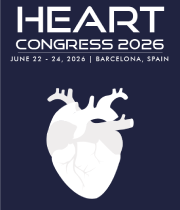Title : Arterial and venous thrombolysis with a new modified JG microplasmin
Abstract:
Introduction: The fibrinolytic activity in human plasma was subsequently shown to depend on activation of a plasminogen as precursor. As plasmin derives from plasminogen, it is possible that microplasmin also has a precursor, microplasminogen. The present study describes the activity in carotid artery and venous thrombus of a functional novel microplasmin, derived by autocleavage of nonenzymatic plasminogen, with a height affinity to fibrin Lys site.
Material and Methods: Thirteen male and female rabbits, seven (group A) treated with microplasmin and six (group B) as placebo, weighing 2500–3200 g were initially anaesthetized with ketamine. The carotid artery was occluded by using a protothrombotic solution (calcium, tissue factor) (protocols of experimental surgery laboratory, Cordoba Catholic University). For the venous study, two vessels were used, one treated with saline solution and the other with JG microplasmin.
Results: the thrombolytic activity showed reperfusion in all of the animals (100%) treated with microplasmin and none in the group treated with placebo (0%) (P¼0.002). The analysis of Echo Doppler in the carotid artery showed normal flow prethrombosis, thrombosis after 30 min, partial thrombolysis after 15 min of microplasmin activity into the artery and total thrombolytic effect after the another 15 min of injection. Regarding venous vessels, total thrombolysis was observed in the treatment with microplasmin JG.
Conclusion: The use of new forms of microplasmins could improve the resolution of arterial and venous thrombosis of small caliber vessels.



